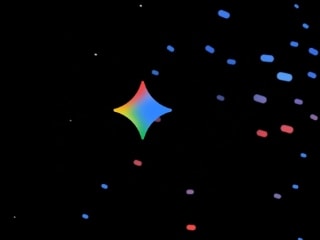- Home
- Science
- Science News
- NASA Shares Stunning Image of Saturn’s Moon Dione in Transit
NASA Shares Stunning Image of Saturn’s Moon Dione in Transit
Dione is a small moon of just 562km in mean radius, about one-third of our Moon.

Photo Credit: NASA
The name Dione is derived from the Greek goddess Dione
NASA has shared a stunning image of Saturn's moon Dione, which appears as a tiny ball compared to the ringed gas giant during a transit. The space agency said the image was captured from a distance of about 2.3 million kilometres, and probably that's why the moon appears even smaller than its actual size. Scientists say transits play a vital role in understanding the relationship between the planet and its moons. When the Moon passes between the Earth and the Sun, during transit, it leads to the solar eclipse.
Giovanni Cassini discovered Dione in 1684. It is a small moon of just 562km in mean radius, about one-third of our Moon. Dione orbits Saturn every 2.7 days at a distance of 377,400km, roughly the same distance that the Moon orbits around the Earth. Scientists believe that Dione is mainly made up of ice. At Dione's average temperature of -186 degrees Celsius, ice is very hard and behaves like rocks.
NASA said that this image of the “unilluminated side” of Saturn's rings and its moon was captured in May 2015 by its Cassini spacecraft, which served for 20 years in space. When it exhausted its fuel, scientists decided to send it on its daring final mission to protect another Saturn moon, Enceladus, which may have conditions favourable for life. Cassini dove into Saturn's atmosphere in September 2017.
The spacecraft had two elements — the Cassini orbiter and the Huygens probe. A joint endeavour of NASA, the European Space Agency, and the Italian Space Agency, Cassini was a complex mission to study Saturn and its complex system of rings and moons in unprecedented detail.
NASA states that Saturn has 82 moons. Out of then, 53 have been confirmed and named, while the other 29 are awaiting confirmation. The biggest of these moons is called Titan.
Catch the latest from the Consumer Electronics Show on Gadgets 360, at our CES 2026 hub.
Related Stories
- Samsung Galaxy Unpacked 2025
- ChatGPT
- Redmi Note 14 Pro+
- iPhone 16
- Apple Vision Pro
- Oneplus 12
- OnePlus Nord CE 3 Lite 5G
- iPhone 13
- Xiaomi 14 Pro
- Oppo Find N3
- Tecno Spark Go (2023)
- Realme V30
- Best Phones Under 25000
- Samsung Galaxy S24 Series
- Cryptocurrency
- iQoo 12
- Samsung Galaxy S24 Ultra
- Giottus
- Samsung Galaxy Z Flip 5
- Apple 'Scary Fast'
- Housefull 5
- GoPro Hero 12 Black Review
- Invincible Season 2
- JioGlass
- HD Ready TV
- Laptop Under 50000
- Smartwatch Under 10000
- Latest Mobile Phones
- Compare Phones
- Honor Magic 8 RSR Porsche Design
- Honor Magic 8 Pro Air
- Infinix Note Edge
- Lava Blaze Duo 3
- Tecno Spark Go 3
- iQOO Z11 Turbo
- OPPO A6c
- Samsung Galaxy A07 5G
- Lenovo Yoga Slim 7x (2025)
- Lenovo Yoga Slim 7a
- Lenovo Idea Tab Plus
- Realme Pad 3
- Moto Watch
- Garmin Quatix 8 Pro
- Haier H5E Series
- Acerpure Nitro Z Series 100-inch QLED TV
- Asus ROG Ally
- Nintendo Switch Lite
- Haier 1.6 Ton 5 Star Inverter Split AC (HSU19G-MZAID5BN-INV)
- Haier 1.6 Ton 5 Star Inverter Split AC (HSU19G-MZAIM5BN-INV)







![[Sponsored] Haier C90 OLED TV | Dolby Vision IQ, 144Hz OLED and Google TV in Action](https://www.gadgets360.com/static/mobile/images/spacer.png)









